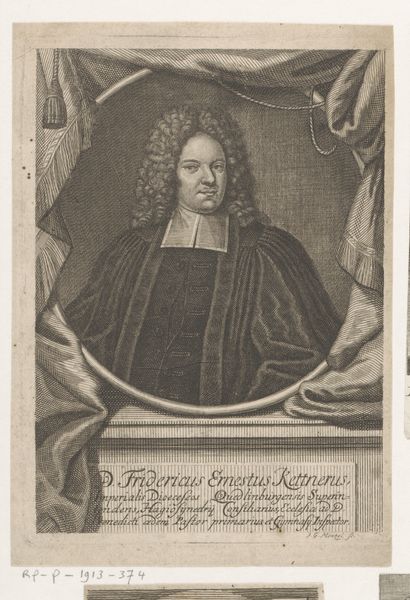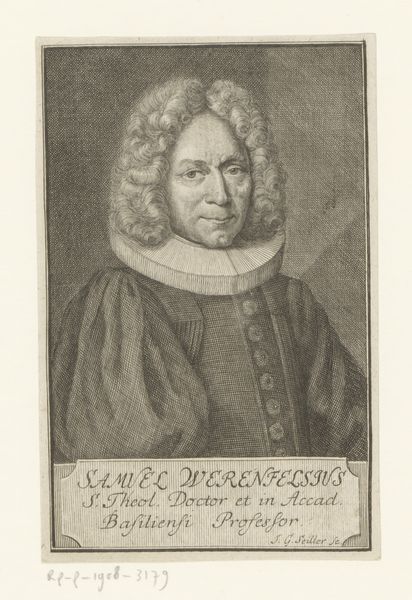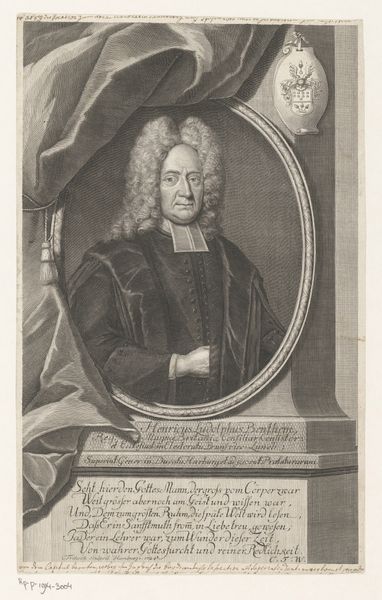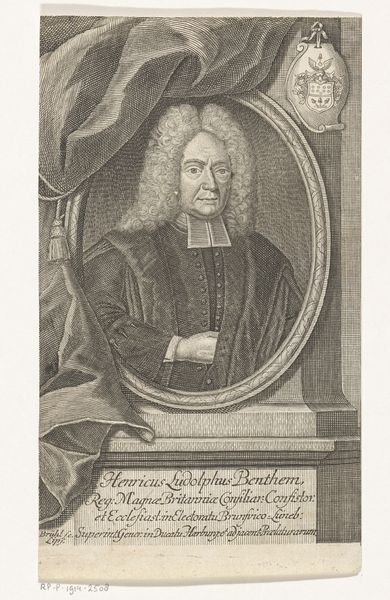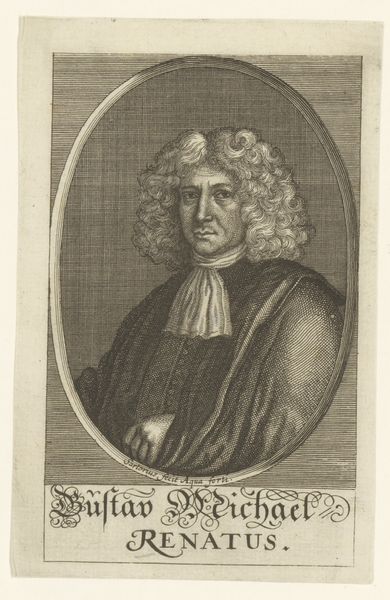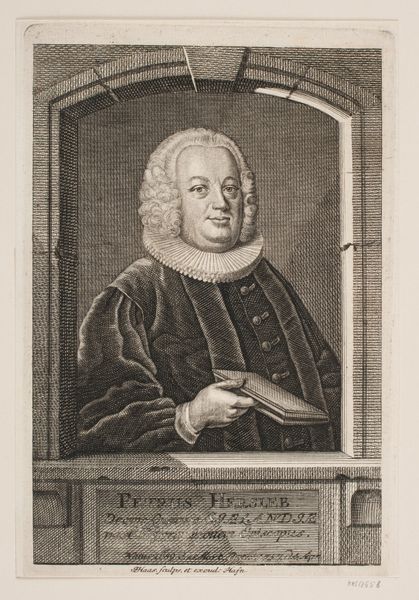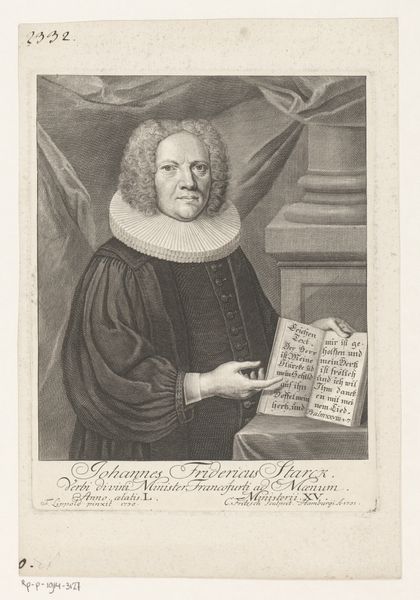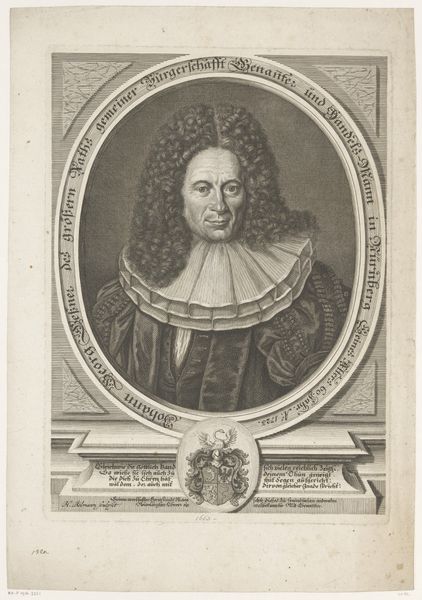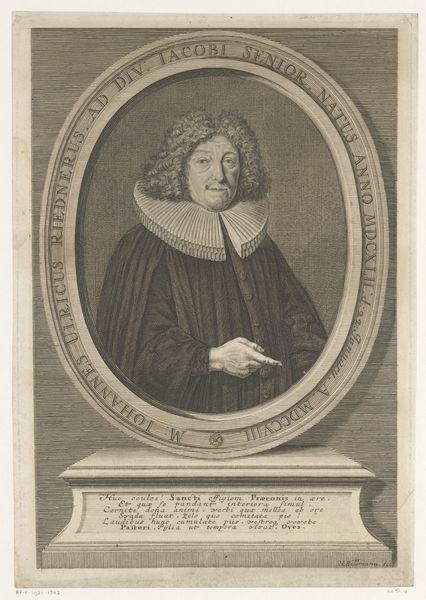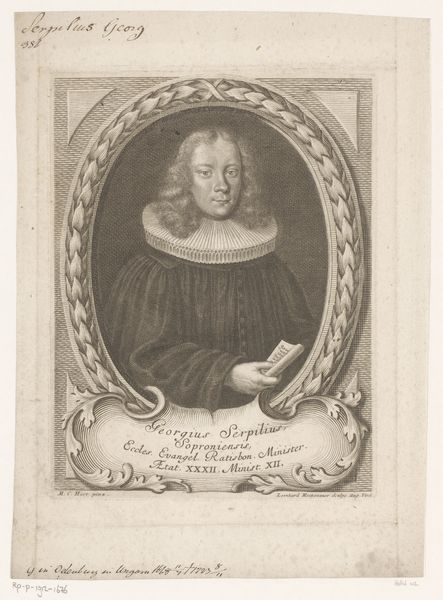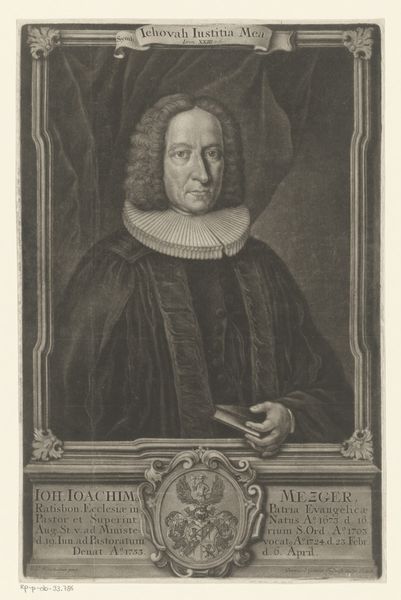
engraving
#
portrait
#
baroque
#
old engraving style
#
form
#
portrait reference
#
line
#
portrait drawing
#
history-painting
#
academic-art
#
engraving
#
realism
Dimensions: height 140 mm, width 86 mm
Copyright: Rijks Museum: Open Domain
Curator: This engraving, created in 1732, captures the likeness of Johann Friedrich Starck, a prominent minister in Frankfurt. The artist is Christian Fritzsch. Editor: It's striking how the limited palette, essentially just shades of grey achieved through engraving, creates such a detailed and dignified portrait. The textural variation alone is quite impressive. Curator: Absolutely. As an engraving, its production involved meticulous labor. The lines are carefully etched into a metal plate, each stroke requiring skill and precision, suggesting a well-established workshop supporting this kind of commission. These portraits served a social function; they documented status. Editor: And the visual language communicates that status so directly. The oval frame creates a sense of formality and containment. Note the interplay of curves and lines; the soft curls of the wig juxtaposed against the crisp, almost architectural ruff. The hand, gracefully posed, almost beckons you in, disrupting the formal, bust-like feel. Curator: It speaks volumes about the prevailing social structures too. Starck's profession, as inscribed below his portrait, immediately indicates his importance. These portraits provided visual validation of the hierarchy within 18th-century society. What raw materials were involved, who crafted it, and how it was circulated all factored into establishing standing. Editor: Yes, but even divorced from that specific context, one cannot deny the piece’s careful attention to balancing detail. The meticulous execution of the lace contrasts with the relatively simpler rendering of the robe. And those minute lines… the artist coaxing gradients of value and light out of simple marks on the copper plate. Curator: Perhaps understanding the material production reveals more of the intention, which may challenge certain preconceived notions. These commissioned engravings promoted those in power. It’s more than an aesthetic feat; it’s the production of visual rhetoric. Editor: I appreciate the chance to delve into both the historical context and the aesthetic impact of Fritzsch's portrayal of Stark. Curator: Indeed. This exploration of artistry reminds us that meaning is embedded within material conditions.
Comments
No comments
Be the first to comment and join the conversation on the ultimate creative platform.
